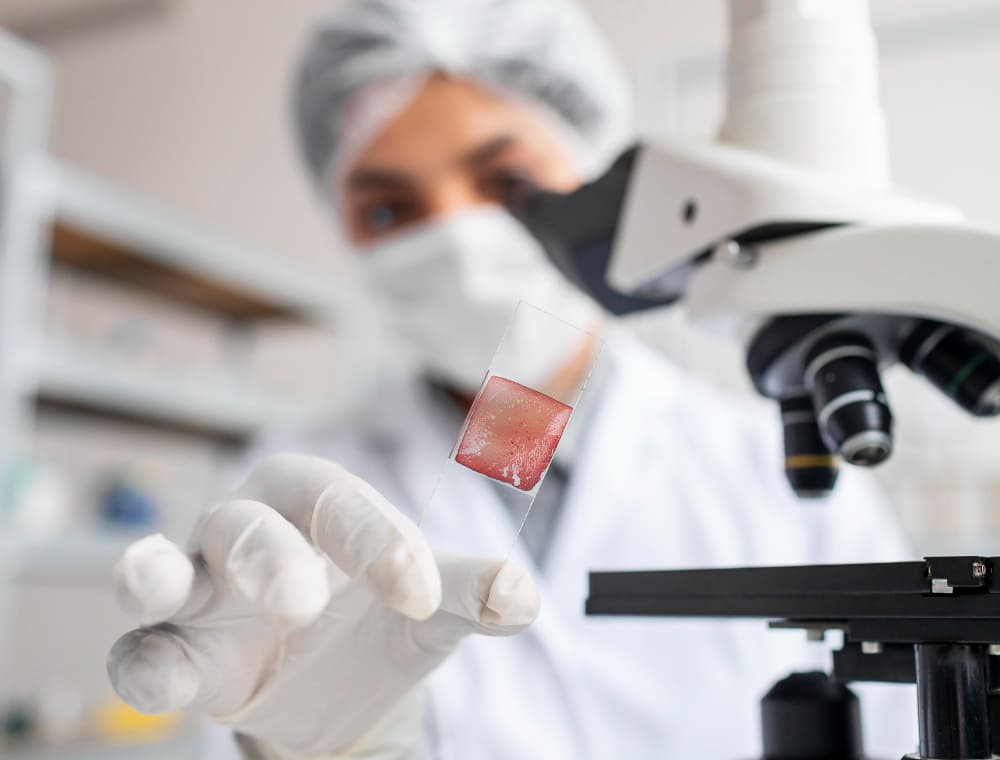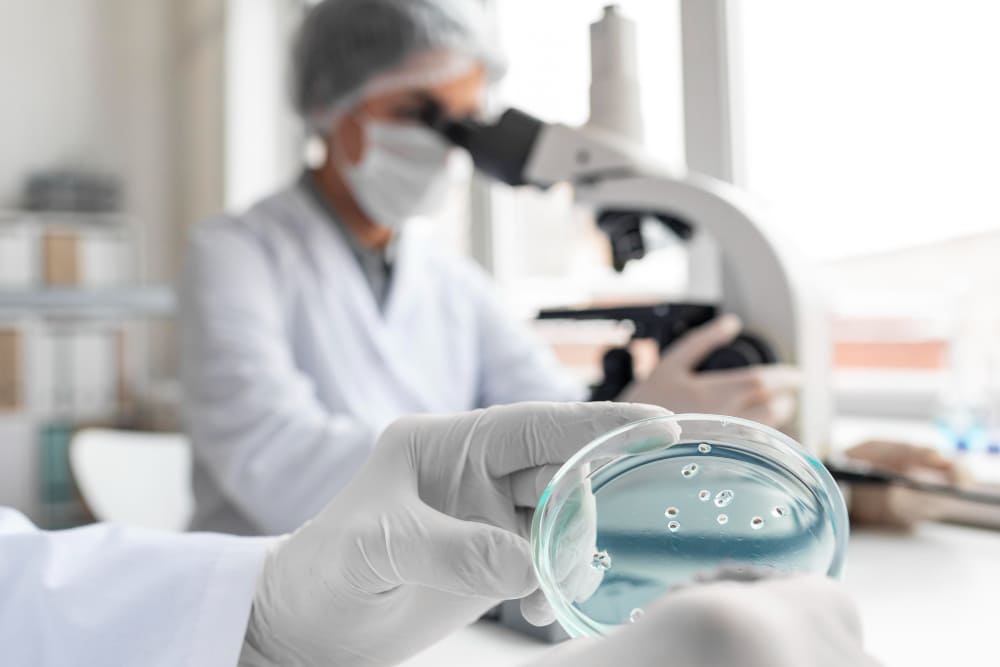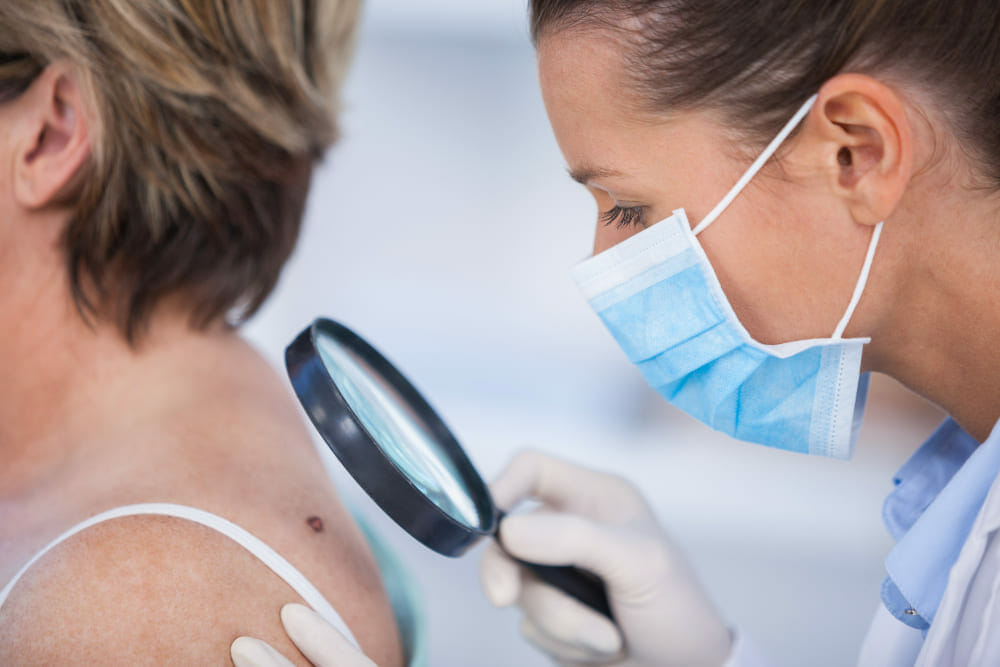Skin biopsy
Skin biopsy is a highly relevant test, as it can provide accurate and useful information for the diagnosis and treatment of a variety of benign and malignant skin disorders.
A result that can make a difference
The skin is the largest organ of the body, therefore, it is prone to infections, autoimmune diseases, cancer, among others. Performing a skin biopsy helps us to obtain accurate information about the cause of a skin lesion, allowing us to determine if the lesion is benign or malignant. With this information, the specialists at Panama Cancer Clinic will be able to give you a diagnosis and select the best possible treatment.
Performing a skin biopsy early in people with suspected skin cancer can help detect the disease in its early stages.
The results of the skin biopsy show the type of skin cancer present in order to determine the most appropriate treatment.

A safe procedure
This outpatient test is very minimally invasive and poses no risk to the patient.

Accurate and reliable results
The accuracy of skin cancer diagnosis through skin biopsies averages about 90%.

The Specialist
Our physicians perform this examination in a careful and respectful manner with each patient.
What is a skin biopsy?

A skin biopsy is a medical procedure in which a small piece of skin is removed for examination in a laboratory. This test can help diagnose a variety of skin diseases, including: skin cancer, infections and autoimmune diseases.
It is important to mention that early detection increases the chances of effective treatment and reduces the risk of disease spread.
How is a skin biopsy performed?
Performing a skin biopsy is a generally simple procedure, which begins with cleaning the target area and applying a local anesthetic to minimize any discomfort during the removal of the skin sample. Subsequently, the specialist uses a special instrument to extract a skin fragment to be sent to the laboratory for pathological analysis.
Is the skin biopsy painful?
Most patients experience mild, temporary discomfort during the skin biopsy. However, the physician may apply a topical anesthetic to minimize pain or discomfort. Rarely, mild pain may occur after the procedure, in which case, over-the-counter pain relievers are recommended as directed by the physician.
How to prepare for a skin biopsy?
To prepare for a skin biopsy, it is important to inform your doctor about any medications you are taking, especially blood-thinning medications that may increase the risk of bleeding. In this regard, it is advisable to avoid aspirin or aspirin-containing products (at least one week before the procedure) to reduce the risk of bleeding.
Types of skin biopsy
There are several types of skin biopsy that can be used depending on the location, size and depth of the skin lesion. Some of the most common types of skin biopsy include:
Shave biopsy
It is used to extract a superficial sample of the skin using a shaving tool.
Incisional biopsy
In an incisional biopsy, the physician uses a scalpel to remove a small area of skin that will be sent to the laboratory for analysis. This type of biopsy is used when a skin lesion is too large to remove with a shave or punch biopsy, but does not require complete removal of the lesion as in an excisional biopsy.
Excisional biopsy
Excisional biopsy involves the removal of an entire skin lesion, rather than just a superficial sample.
Needle biopsy
A needle is used to extract a sample of skin from the lesion under the skin.
Curettage biopsy
This biopsy involves scraping the lesion with a tool called a curette to obtain a sample of the skin.
What is skin biopsy used for?
The primary purpose of a skin biopsy is to obtain a skin sample for examination in a laboratory to obtain a reliable diagnosis of a variety of skin conditions and diseases. Skin biopsy helps identify the underlying cause of a skin lesion, whether it is an infection, an autoimmune disease, a benign condition or a form of skin cancer.


